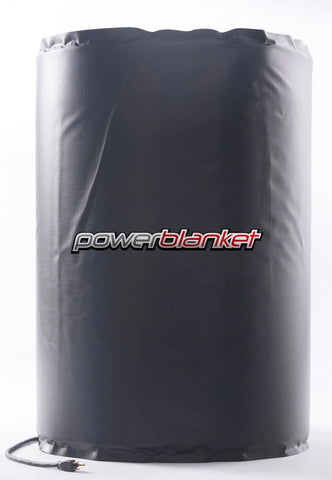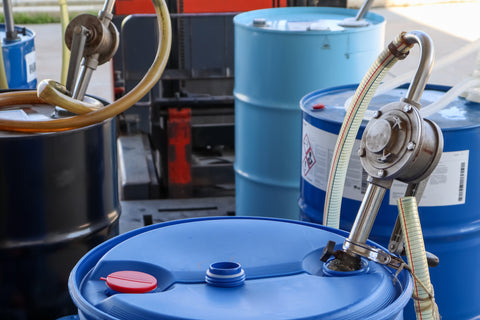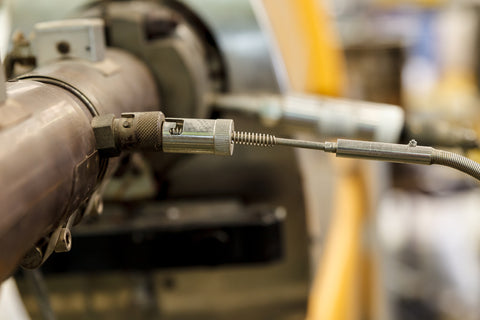Introduction to 55-Gallon Drum Accessories
Understanding the importance of the right accessories is crucial for anyone using 55-gallon drums. In this article, we'll explore a variety of drum accessories designed to make your work with drums more efficient and safe.
Essential Drum Accessories for Efficiency
-
Drum Pumps and Faucets
-
Facilitating Liquid Dispensing: Drum pumps and faucets are indispensable for dispensing liquids. They transfer from a large drum to a smaller container efficiently, reducing spillage and waste.
-
-
Drum Cradles and Dollies
-
Simplifying Mobility and Handling: Transporting a full 55-gallon drum can be challenging. Drum cradles and dollies are essential tools that facilitate the movement of these large containers with ease.
-

-
Drum Lifters and Drum Locks
-
Ensuring Safety and Security: Safety is paramount when handling drums, especially when they contain chemicals or other hazardous materials. Drum lifters and locks are crucial for secure handling and storage.
-
-
Fill Gauges and Lids
-
Monitoring and Protecting Contents: Keeping track of the amount of liquid in a drum and protecting it from external elements is essential. Fill gauges and lids help monitor and maintain the integrity of the drum's contents.
-

Specialty Accessories for Specific Needs
-
Drum Mixers and Heaters
-
Managing Contents Effectively: For certain substances, maintaining a consistent temperature or mixture is vital. Drum mixers and heaters are key accessories for these tasks.
-
-
UV and Chemical Resistant Accessories
-
When storing sensitive materials, UV and chemical resistance becomes crucial. Choosing the right drum accessories that can withstand these elements is essential.
-
-
Fire Safety Equipment
-
Preventing Hazards: Fire safety is a critical consideration, especially when storing flammable liquids. Fire-resistant accessories and equipment are vital for ensuring a safe working environment.
-
Selecting the Right Attachments for Your Drum
Considering Material Compatibility: Plastic vs. Steel Drums
The type of material your drum is made from significantly impacts the choice of accessories. Plastic and steel drums each have their own set of requirements and compatible attachements driven by their distinct characteristics.
Plastic Drums:
-
Chemical Compatibility: Plastic drums are often preferred for storing certain chemicals, solvents, and acids that may corrode metal. It's essential to ensure that the plastic is compatible with the stored substance to avoid degradation.
-
Weight and Handling: Typically lighter than steel, plastic drums require accessories that cater to their flexibility and lower weight. For instance, pumps and faucets designed for plastic drums might have different fittings to accommodate their structure.
-
Temperature Sensitivity: Plastic drums can be more sensitive to temperature variations. When choosing heaters or insulation additions, one must consider the melting point and thermal resistance of the plastic.
Steel Drums:
-
Durability and Strength: Steel drums can handle more weight and are less prone to punctures. This allows for the use of heavier-duty accessories like robust drum lifters and cradles.
-
Corrosion Resistance: While steel is more resistant to physical damage, it's susceptible to rust and corrosion. Accessories like liners and sealers are essential to protect the drum's integrity.
-
Heat Conductivity: Steel's heat conductivity makes it suitable for applications requiring temperature control. Products like drum heaters must be chosen with the drum's heat tolerance in mind.
Capacity and Dimension Considerations
The size and capacity of your drum are crucial in determining the right accessories. Incompatible accessories can lead to operational inefficiencies and safety hazards.
-
Volume Matching: Accessories like pumps and faucets must be chosen based on the drum’s volume to ensure efficient dispensing. A pump too large for a small drum can lead to over-dispensing, while one too small for a large drum might be inefficient.
-
Height and Diameter: The physical dimensions of the drum affect the compatibility of cradles, dollies, and lifters. It's important to select accessories that match the drum's height and diameter to ensure a secure fit and prevent tipping or instability.
-
Portability Needs: For larger drums, especially those at the higher end of the 55-gallon capacity, heavier-duty dollies and lifters are necessary to manage the additional weight safely.
Understanding the Specifics of Your Storage and Dispensing Needs
Every storage and dispensing situation has unique requirements, and understanding these is key to selecting the right drum accessories.
-
Substance Being Stored: The nature of the material being stored (e.g., viscous, flammable, corrosive) dictates the type of accessories needed. For example, flammable liquids require spark-resistant pumps and grounding accessories.
-
Dispensing Frequency and Volume: High-frequency dispensing environments may need more durable pumps and automated gauges, whereas lower frequency use might prioritize simpler, manual accessories.
-
Environmental Considerations: The storage environment (indoor vs. outdoor, temperature fluctuations, exposure to elements) influences the choice of drum covers, liners, and insulation accessories.
-
Compliance and Safety Requirements: Adhering to industry standards and safety regulations is paramount. This may involve selecting accessories that are specifically tested and certified for certain types of contents or environments.
Maintenance and Care of Drum Accessories
Regular Cleaning and Inspection: Ensuring the longevity and proper functioning of drum accessories requires a consistent and thorough maintenance routine. Regular cleaning and inspection play a crucial role in this process.
-
Cleaning Procedures:
-
Frequency and Method: Cleaning frequency should align with usage intensity. For accessories exposed to corrosive or viscous liquids, more frequent cleaning is necessary. Use appropriate cleaning agents that do not degrade the material of the accessories.
-
Attention to Detail: Pay special attention to areas where residue can accumulate, such as pump mechanisms, faucet spouts, and lid seals. This prevents buildup that could affect performance or cause contamination.
-

-
Inspection Points:
-
Wear and Tear: Regularly check for signs of wear, such as cracks in plastic components, rust on metal parts, or degradation of seals and gaskets.
-
Operational Efficiency: Ensure that pumps, faucets, and other moving parts operate smoothly. Any stiffness or irregularity in operation could indicate underlying issues.
-
Safety Features: Inspect safety-related components like locks and fire safety equipment to ensure they are in working order.
-
-
Record Keeping: Maintain a log of cleaning and inspection activities. This helps in tracking the condition over time and planning for preventive maintenance.
Replacement and Repair: When to Update Your Accessories Knowing when to replace or repair drum accessories is vital for maintaining operational safety and efficiency.
-
Lifecycle Management:
-
Expected Lifespan: Understand the expected lifespan of each accessory. Factors like material quality, frequency of use, and exposure to harsh conditions affect longevity.
-
Proactive Replacement: Proactively replace accessories nearing the end of their expected lifespan, even if they show no immediate signs of failure. This preemptive approach avoids potential hazards and operational disruptions.
-
-
Repair vs. Replacement:
-
Cost-Benefit Analysis: Weigh the cost of repairs against the price of replacement. For critical or heavily used accessories, replacement might be more economical in the long run.
-
Availability of Parts: Assess the availability and cost of spare parts. In cases where parts are scarce or expensive, replacing the entire accessory could be more practical.
-
-
Safety and Compliance:
-
Regulatory Standards: Ensure that any replacements or repairs meet industry standards and regulations. Using non-compliant accessories can pose safety risks and legal issues.
-
Expert Consultation: In complex cases, consult with experts or manufacturers to determine the best course of action. They can provide insights into whether an accessory should be repaired or replaced.
-
-
Upgrading for Efficiency:
-
Technological Advancements: Stay informed about new developments in drum accessory technology. Upgrading to more advanced or efficient models can enhance safety and operational efficiency.
-
Customized Solutions: Consider custom solutions if off-the-shelf accessories do not meet specific needs effectively. Customized accessories can offer improved performance and better integration with existing systems.
-
Conclusion: Maximizing Efficiency with the Right Drum Accessories
Choosing and maintaining the right 55-gallon drum accessories is key to efficient and safe operations. With the right tools, you can streamline your processes and ensure safety in your workplace.







